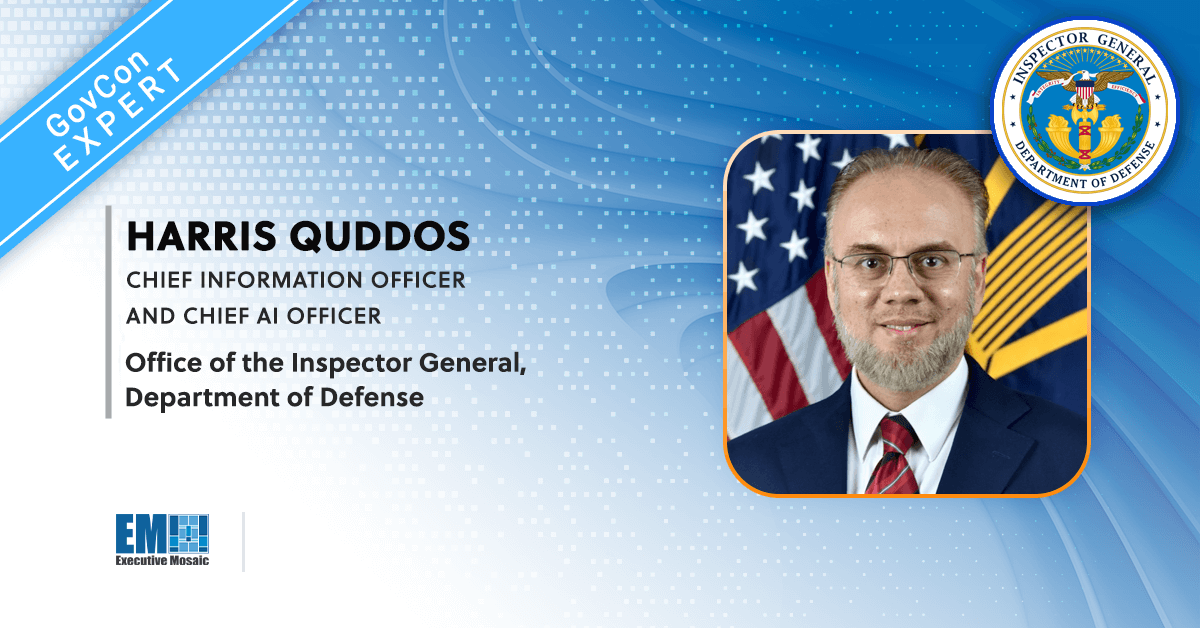By Harris Quddos, Department of Defense Office of the Inspector General chief information officer and chief AI officer
Application rationalization is a crucial step for government contracting organizations aiming to streamline operations, cut costs and embrace the latest technologies. However, transitioning from an overloaded application portfolio to a lean, business-value-focused and optimized landscape doesn’t come without its challenges. Below are five hidden pitfalls that can derail your strategic roadmap if not carefully navigated.
1. Limited Collaboration Between IT and Business
One of the most critical, yet often overlooked, factors in successful application rationalization is fostering strong collaboration between information technology and business units. Effective rationalization requires a unified view of the application portfolio, viewed through a joint lens that brings together both business and IT perspectives. Achieving this can only be accomplished through cross-functional teamwork. Unfortunately, this collaboration is frequently absent, leading to a fragmented understanding of application needs and priorities. This misalignment can result in decisions that fail to address the core issues of the business or deliver the expected value.
Tip: Make it a priority to establish robust communication channels and ensure regular collaboration between IT and business teams. Achieving a shared understanding of the application portfolio is key, and this can only be accomplished through effective cross-functional engagement. This collaborative approach will align modernization efforts with overall business objectives and increase the chances of a successful rationalization strategy.
2. Lack of Visibility and Interconnectivity in Your Application Portfolio
A significant barrier to effective application rationalization is the lack of visibility into the application portfolio and its interdependencies. Without a clear understanding of how applications interact and depend on each other, organizations risk making misguided decisions that could lead to higher costs and operational inefficiencies. This lack of insight can hinder efforts to streamline the IT landscape and fully capitalize on modernization opportunities.
Tip: Invest in tools and processes that enhance visibility into your application portfolio and its integration with other applications, services and platforms. Having a comprehensive view of how applications are interrelated will enable you to make informed decisions, avoid unintended consequences, and ensure a more efficient and effective rationalization process.
3. Overlooking the Impact on Business Processes
A common oversight during application rationalization is underestimating the ripple effects on business processes. Replacing or modernizing legacy applications often necessitates significant changes in workflows, upskilling the workforce, and even temporary operational disruptions. When these impacts are not carefully planned for, organizations may experience resistance from end users, process inefficiencies, or extended downtime that hinders productivity and business continuity.
Tip: Before implementing any changes, thoroughly assess how each application rationalization decision will impact your business processes. Factor in the need for workflow adjustments, employee upskilling, and potential downtime. By planning for these changes upfront, you can mitigate disruption, ensure smoother transitions and maintain operational efficiency throughout the rationalization process.
4. Misalignment of Modernization Approaches With Rationalization Goals
One common pitfall in application rationalization is failing to fully understand the range of modernization and cloud migration options available. The five primary approaches—rehost, replatform, rearchitect, rebuild and replace—differ significantly in scope, risk, cost and impact on business operations. For example, while rehost and replatform focus primarily on technical changes, rearchitect, rebuild and replace can fundamentally alter the architecture and functionality of applications. Without a clear understanding of these options, organizations might choose an approach that doesn’t align with their business objectives, leading to suboptimal results.
Tip: Before deciding on a modernization strategy, ensure that all stakeholders have a solid understanding of each approach’s potential impact on the application’s technology, architecture and functionality. This will help avoid misaligned expectations and reduce the risk of costly mistakes.
5. Neglecting Regular Application Rationalization
Despite its importance, many organizations overlook the need for regular application rationalization. Companies that engage in periodic rationalization are better positioned to adapt to changing market conditions, drive innovation and improve overall efficiency. By continually assessing and optimizing their application portfolios, these companies free up valuable resources that can be redirected toward strategic initiatives, gaining a significant competitive advantage.
Tip: Make regular application rationalization a key part of your ongoing business strategy. This proactive approach ensures that your application landscape remains aligned with business needs and positions your organization to respond more effectively to market changes and opportunities.
Conclusion
Application rationalization is a critical process that requires thoughtful planning and collaboration. By bridging the gap between IT and business, gaining clear visibility into your application landscape, considering the impact on business processes, aligning your modernization strategies with your goals and committing to regular application rationalization reviews, you can avoid common pitfalls. These steps will help you streamline operations, reduce costs and position your organization to fully benefit from new technologies.



